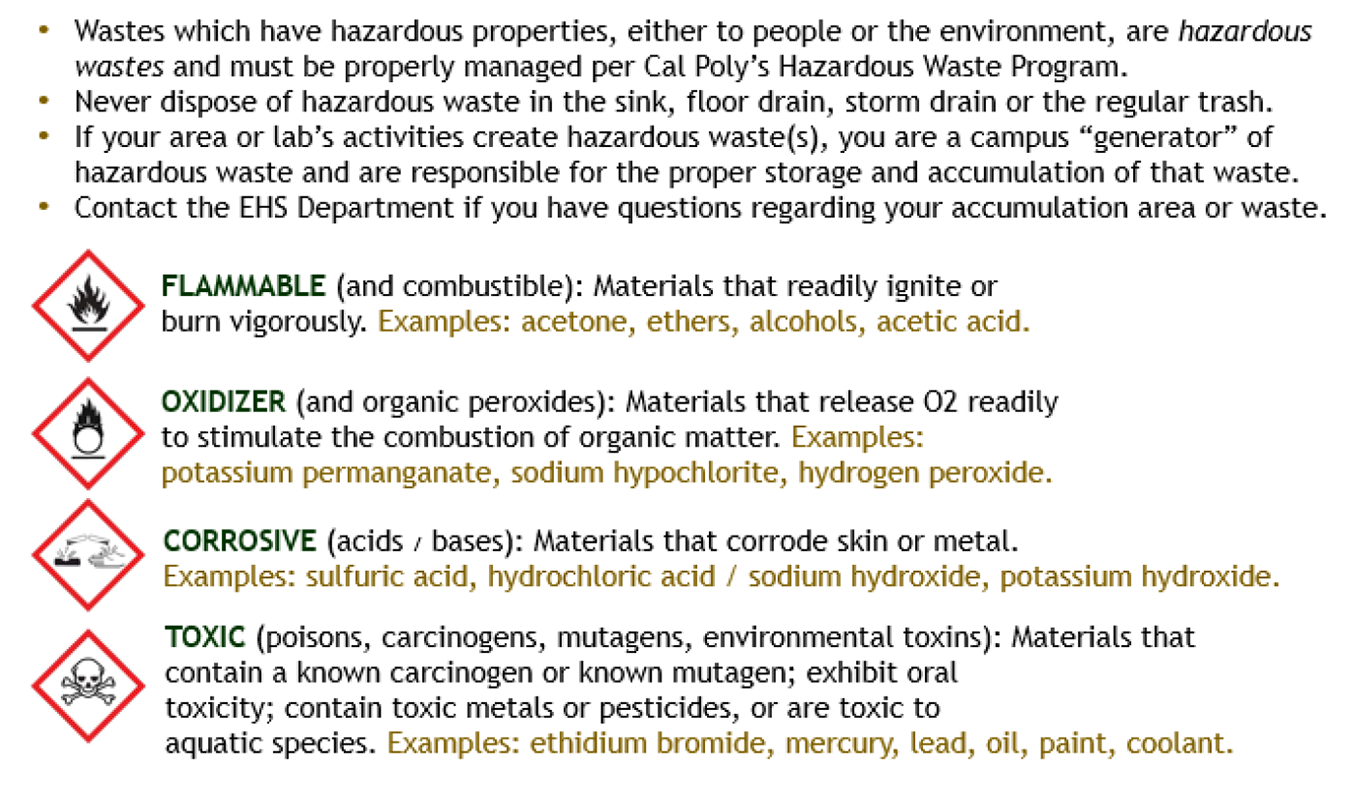Support Page Content
RSS WASTe Module
The “WASTe” Hazardous Waste management tool generates compliant waste labels locally and it tracks all containers in accumulation, even sending alerts when waste has reached the maximum number of days in accumulation.

All campus “laboratories” and “shops” should already (or will soon) have access to RSS. You may need to be assigned to a “group” in order to access RSS “WASTe”.
To request a Hazardous Waste pickup by EH&S, please submit a Hazardous Waste Pickup Request form.
For questions, please contact EH&S at: (916) 278-2020.
Hazardous Waste Take Aways
DOs
- Place Tags at the 1st drop of waste.
- Create Templates for routinely gereated waste streams.
- Print new Tags for Templates.
- Enter the common name of the waste in the COMMENTS section.
- Use the online Request a Hazardous Waste Pickup Form for exiprired materials in original packaging.
- Contact EH&S with any questions or concerns: (916) 278-2020.
DON'Ts
- Don't accumulate waste in unlabeled containers.
- Don't print new Tags from existing Tags. Each has a unique tracking number.
- Don't use the old yellow labels - we can't track them.
- Don't use the RSS WASTe or the Online Form for unknown hazardous waste. Contact EH&S directly.
When is waste a "Hazardous" waste?

Requirements for Hazardous Waste Labels
When starting to fill a new waste container, the user/generator attaches a hazardous waste label to each container and writes the date when the waste was first put into the container or when the chemical was declared a waste (accumulation start date). The user/generator must prepare the hazardous waste disposal label for all of the waste chemicals, e.g., paints, oils, batteries, solvents, cleaners, grease, etc. The user must fill out a Hazardous Waste Container Label for each unwanted chemical, with as much information as known about unwanted chemicals, including
- Generator name,
- Department
- Building/Room #
- Contents
- Physical state (gas, liquid, sludge, slurry, or solid),
- Hazardous properties (reactivity, corrosivity, flammability, toxicity, etc.)
NOTE: When the container is full or 1 year accumulation time, contact EHS for transporting the small containers to EHS's secured, hazardous waste storage facility.